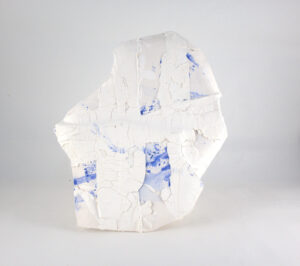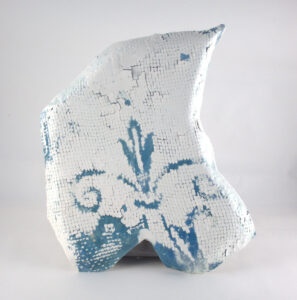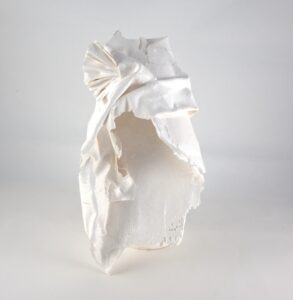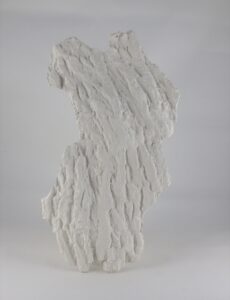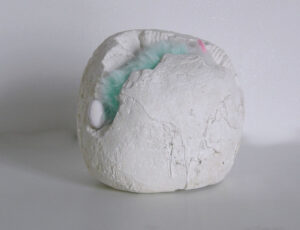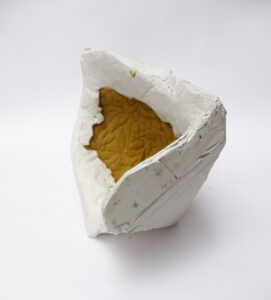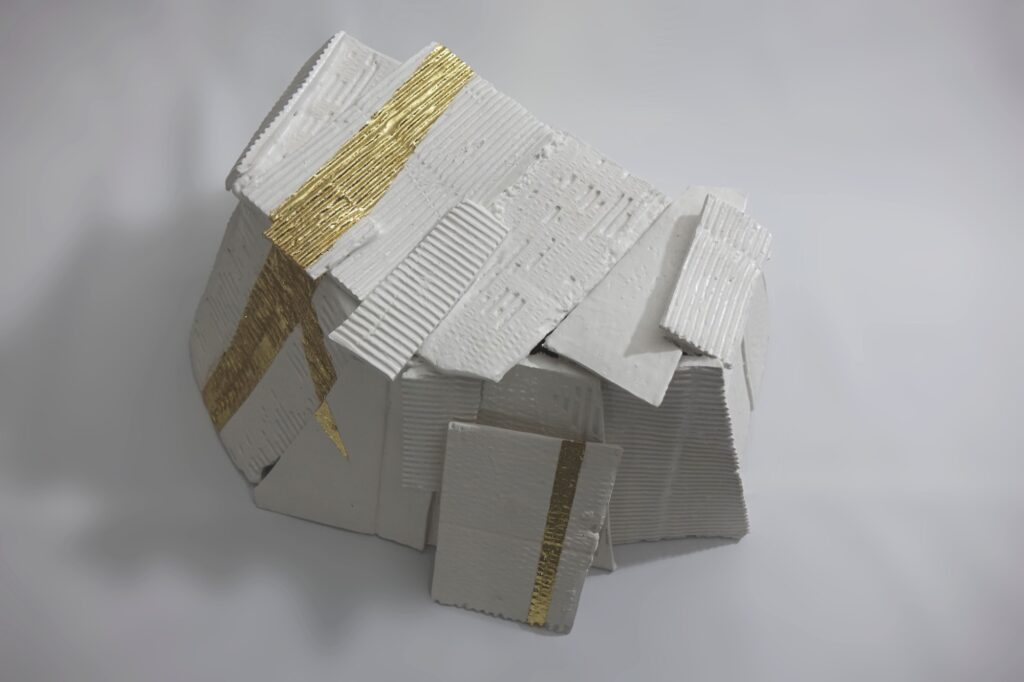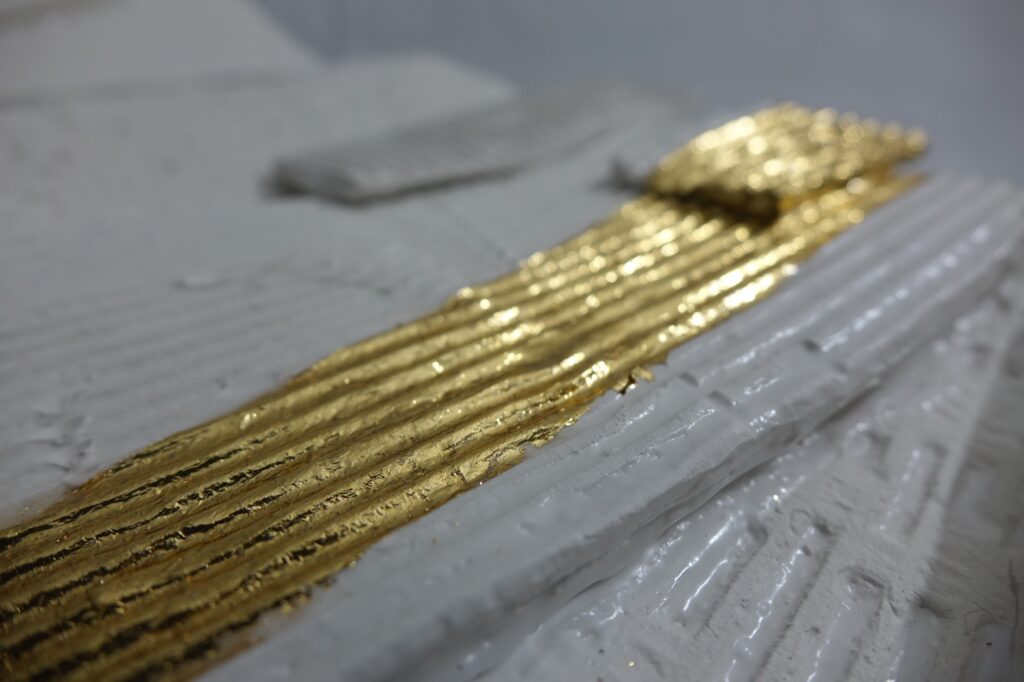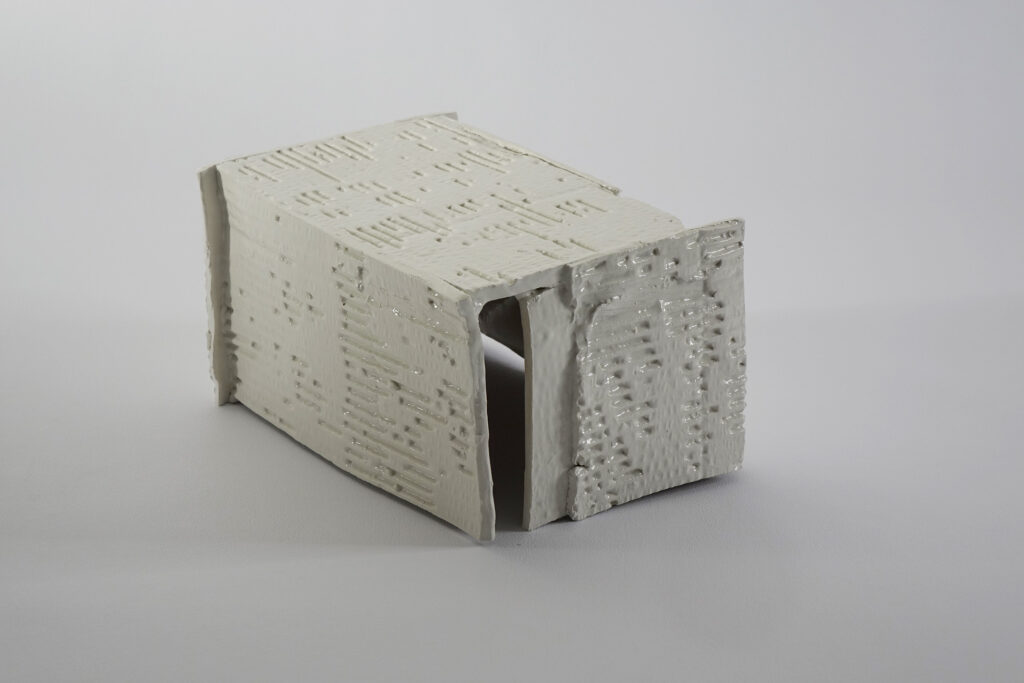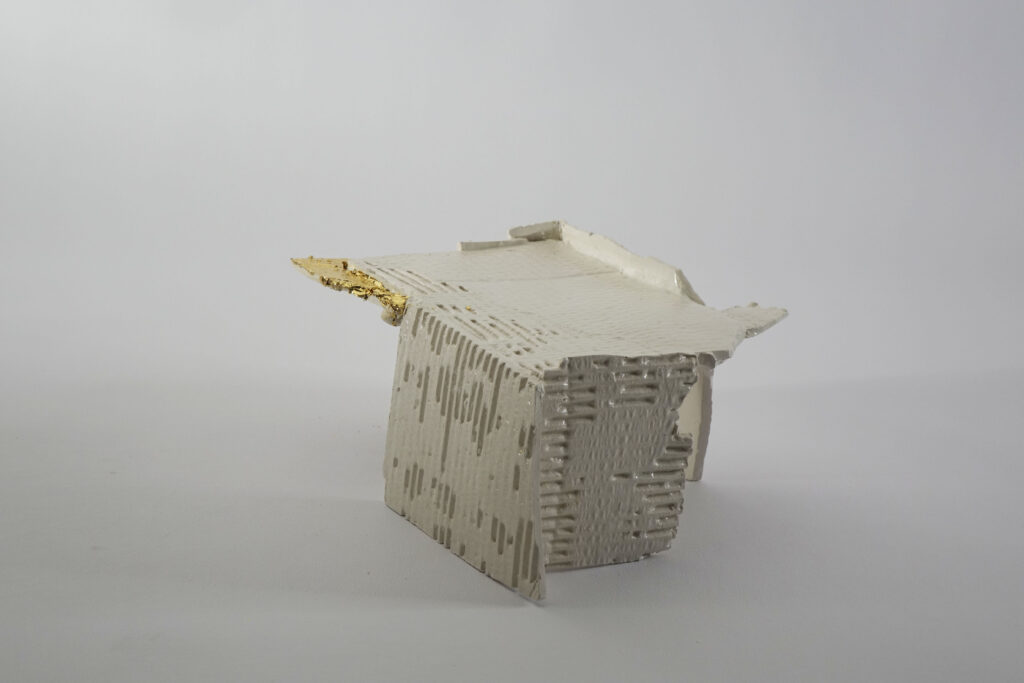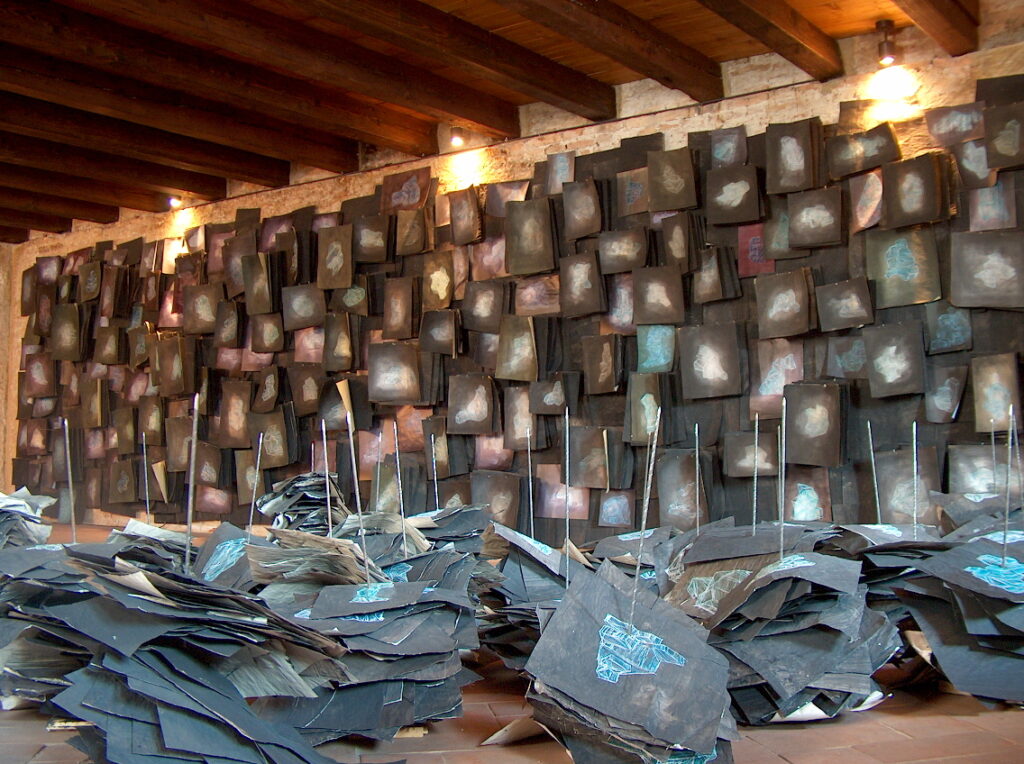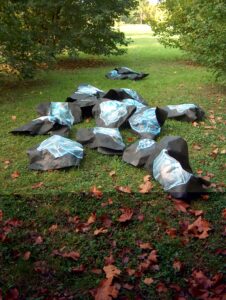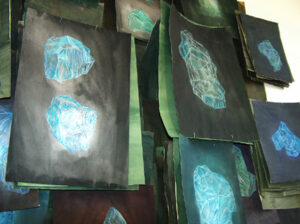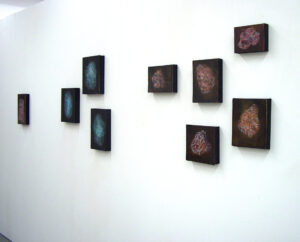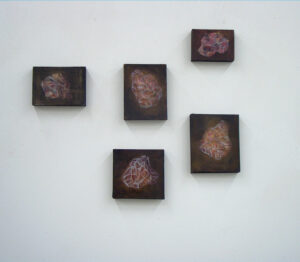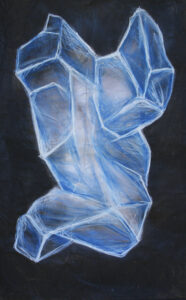TRACES
2022

Fragile like the skin of time, these ceramic fragments emerge as relics of a gesture, of a form that seeks not perfection, but survival. They are, in fact, remnants. The traces left by a passage, a contact, an abandonment.
The surface—cracked or eroded—speaks of what has been lost and what remains. The cracks become maps, the fabric imprints a memory of the body and hands. The white, a line interrupted by faint traces of color, evokes what time has erased but which persists as a visual echo, a silent testimony.
These works don’t tell stories, they whisper. They don’t shout meanings, but open spaces for listening. They present themselves as partial finds, unclassifiable artifacts that resist the erosion of oblivion. The title—Remnants—is both a declaration and a question: what remains today of what we once were? What remains of a gesture, a habit, a presence?
In their apparent immobility, these forms seem to continue to transform. They bear the weight of what is no longer there, but they also carry the subtle strength of a beauty that does not demand centrality. A beauty found in the worn edges, in the absences, in the voids.
They are not finished works: they are what survives the work itself.
CHILDHOOD REMAINS TRACES OF THE INTANGIBLE
2007

Childhood objects—those that once inhabited our rooms and filled our games—resurface in these works as metonyms of memory, tangible signs of what we were and, in part, still are. In the artist’s hands, these fragments become catalysts of memory, symbolic condensations of primordial fears, visionary fantasies, and dreams too fragile to withstand the passage of time.
Through a process of material stratification, the artist constructs a visual landscape in which rough surfaces—concrete, plaster, pigments—open up to reveal submerged traces. Lost objects, hybrid figures, and fantastical creatures emerge like archaeological finds from an inner time. It is a symbolic excavation, in which every artistic gesture corresponds to a gesture of memory, an attempt to bring back childhood not as a clear image, but as a poetic presence, an echo.
Memory, in these works, manifests itself not as an orderly archive, but as a fog. The forms are uncertain, their texture restless, devoid of defined contours: the gaze is invited into an act of reconstruction, an exercise in attention and tenderness. Ambiguity becomes the expressive key, as if the past could never truly return, but only be evoked through clues, imprints, and emotional resonances.
The rough and angular materials, chosen precisely for their ability to simultaneously reveal and conceal, create a contrast between the hardness of the material and the delicacy of the content. It is in this tension that the work’s deeper meaning is revealed: childhood is represented not as an idealized innocence, but as a living ruin, as that which survives beneath layers of time, oblivion, and transformation.
Each work is, ultimately, a small monument to the intangible. A fragile yet tenacious act of resistance to oblivion. An attempt to mend the distance between what we were and what we have become.
REMAINS
2022
“Christiane”
Plaster and fabric – Variable dimensions – Two floor elements, freely positionable even at a distance
How many times did the touch hesitate on the surface of that fabric, tracing every fold like uncertain maps of memory. Now it lies abandoned. Yet in its abandonment, something emerges.
Like a relic unearthed from silent layers, the fabric solidified in plaster becomes a discovery. No longer an object of use, but a trace. No longer a cover, but an imprint. Matter that holds the gesture and returns it in mute form.
This work is part of the Remains of Childhood series, where fabric becomes a metonym for what once was: unconscious protection, refuge, a wordless sense of belonging. Two separate elements, like memories, like bodies. Yet still in relation.
Sculpture as excavation — not to reveal what is visible, but to bring to light what left a mark.





